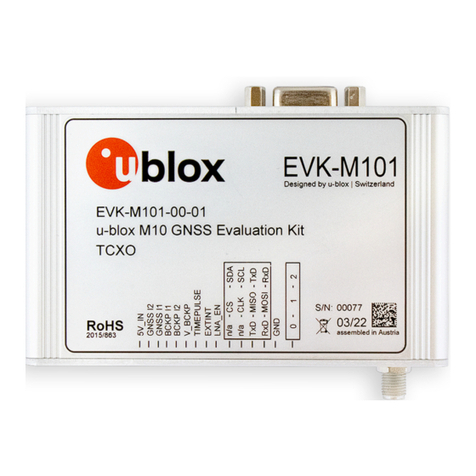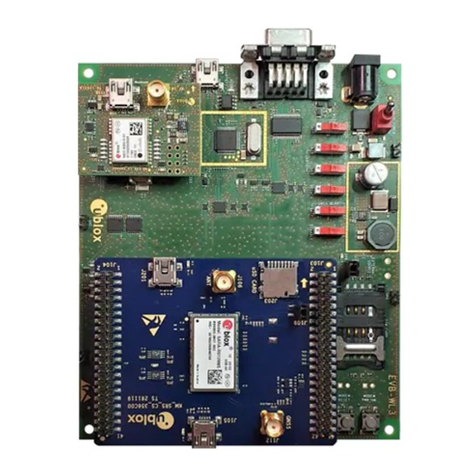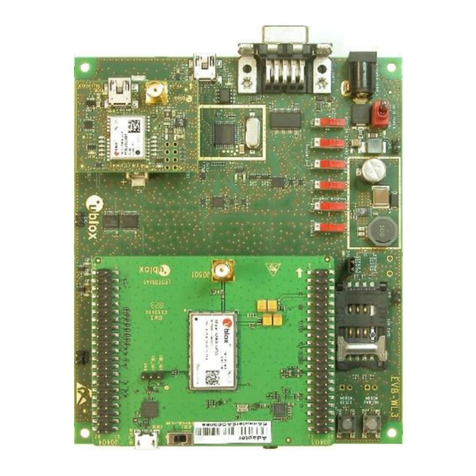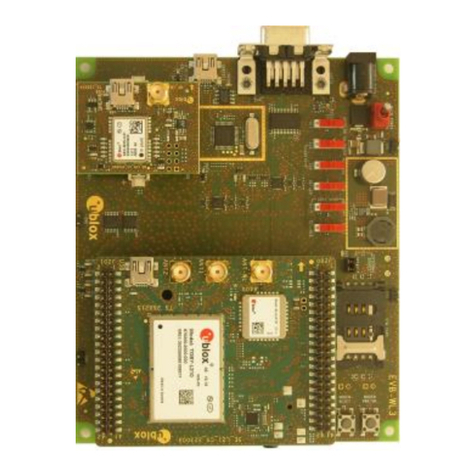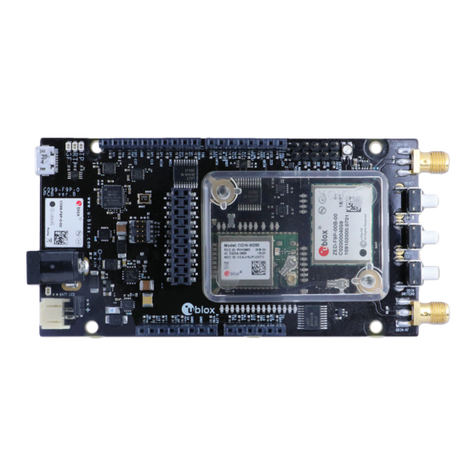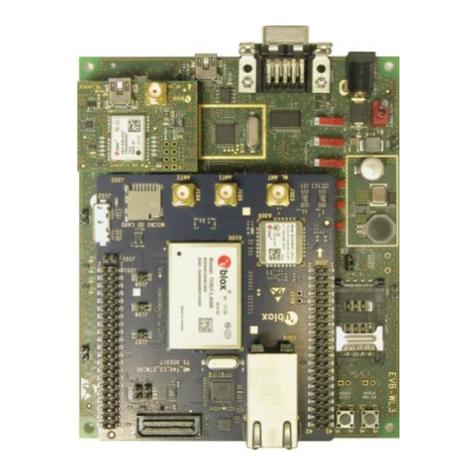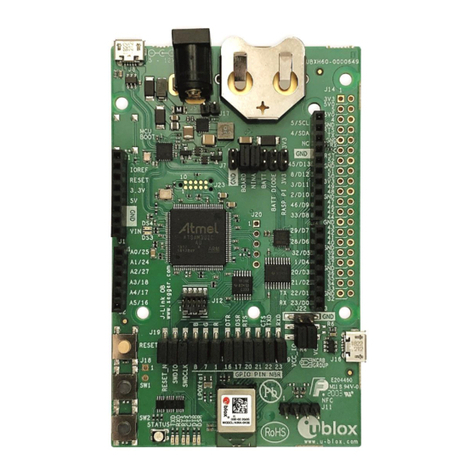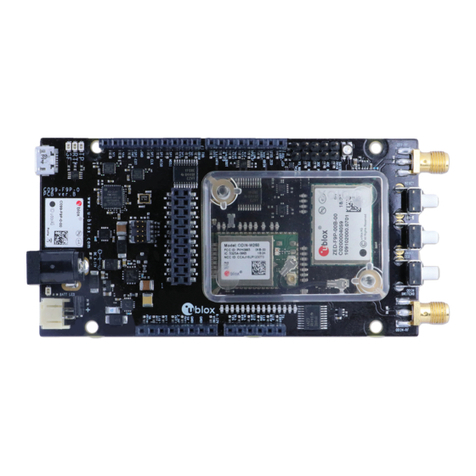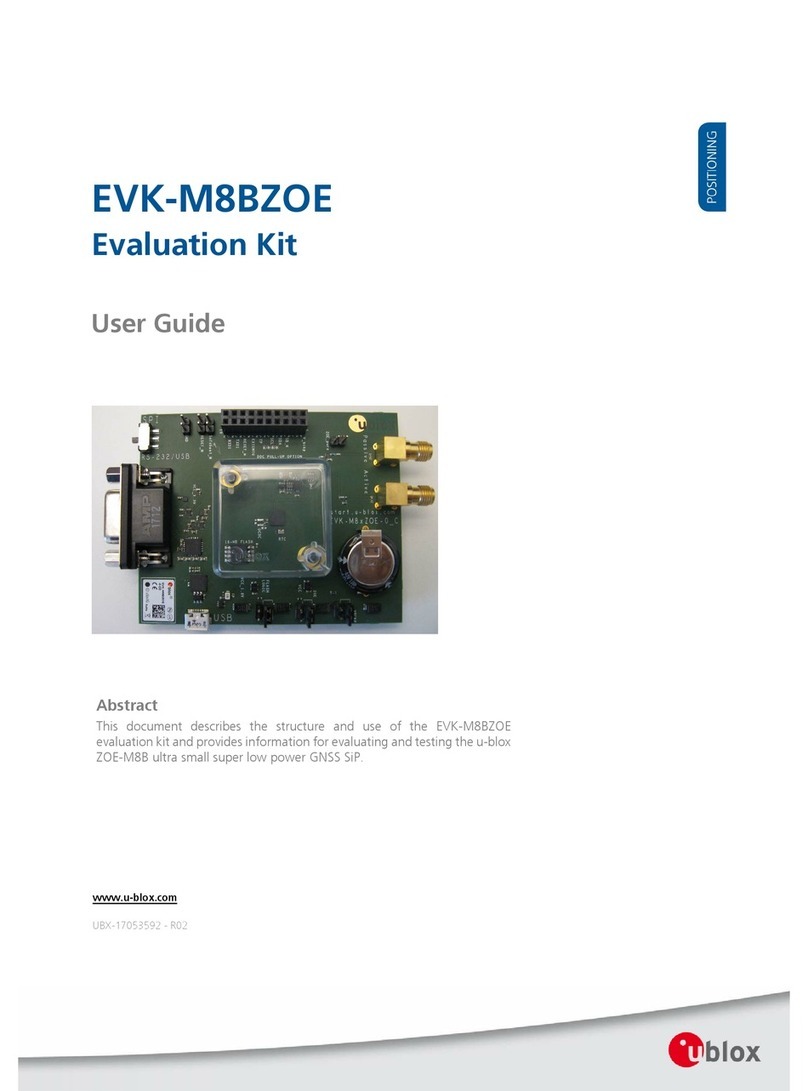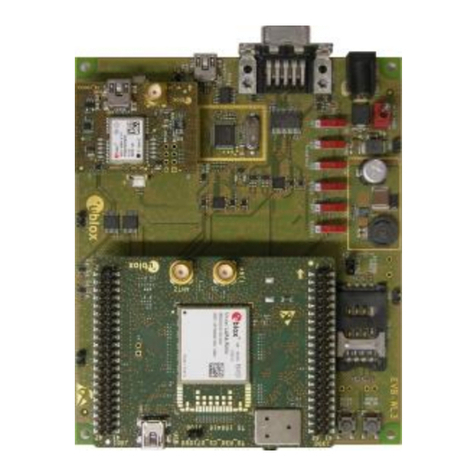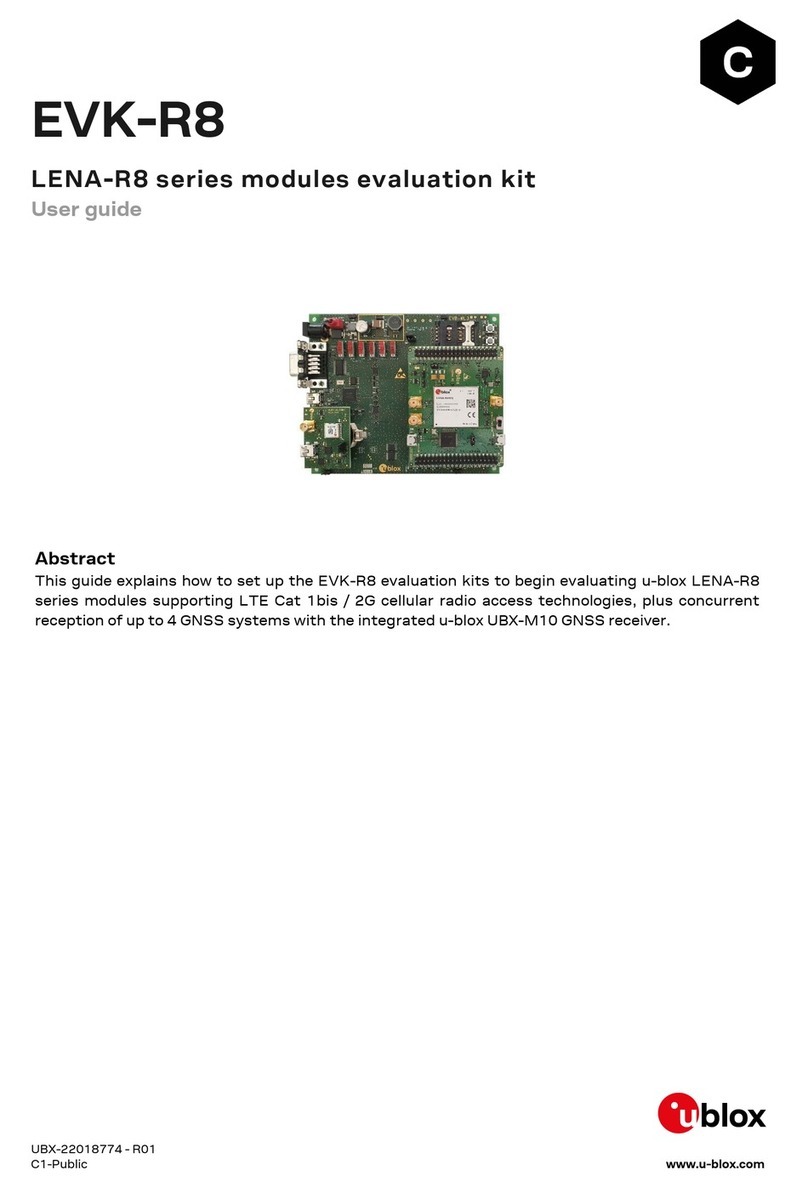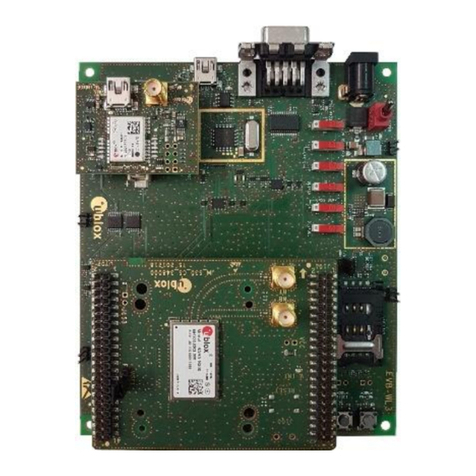EVK-VERA-P174 - User Guide
UBX-17048707 - R06 Page 3 of 30
Contents
Document Information................................................................................................................................ 2
Contents ..........................................................................................................................................................3
1Evaluation kit description...................................................................................................................5
1.1 Overview........................................................................................................................................................5
1.2 Kit includes ................................................................................................................................................... 6
1.3 Software and documentation...................................................................................................................6
1.4 System requirements ................................................................................................................................6
1.5 Specifications .............................................................................................................................................. 7
2Getting started.......................................................................................................................................8
3Board description...................................................................................................................................9
3.1 Block diagram .............................................................................................................................................. 9
3.2 Overview........................................................................................................................................................9
3.2.1 Main board .........................................................................................................................................10
3.2.2 USB and power supply board..........................................................................................................10
3.3 Connectors .................................................................................................................................................12
3.3.1 Power supply and configuration ....................................................................................................12
3.3.2 USB interface.....................................................................................................................................12
3.3.3 Bootstrapping....................................................................................................................................12
3.3.4 SPI interface ......................................................................................................................................12
3.3.5 SPI chip select ...................................................................................................................................13
3.3.6 1PPS interface...................................................................................................................................13
3.3.7 GNSS interface..................................................................................................................................13
3.3.8 SMA connectors................................................................................................................................14
3.3.9 Host interface connector ................................................................................................................14
3.4 LEDs.............................................................................................................................................................14
3.5 Buttons........................................................................................................................................................14
3.6 Design files .................................................................................................................................................14
4Software ................................................................................................................................................ 20
4.1 Quick start instructions...........................................................................................................................20
4.2 Module calibration ....................................................................................................................................22
4.3 Usage examples ........................................................................................................................................23
4.3.1 Transmit and receive counters ......................................................................................................23
4.3.2 Channel configuration .....................................................................................................................24
4.3.3 Transmitter test ...............................................................................................................................24
4.3.4 Receiver test ......................................................................................................................................25
4.3.5 LLC native IPv6 functionality .........................................................................................................26
4.4 Building the software for a different target platform .......................................................................27
Appendix ....................................................................................................................................................... 28
AGlossary ................................................................................................................................................. 28
Related documents ....................................................................................................................................29

